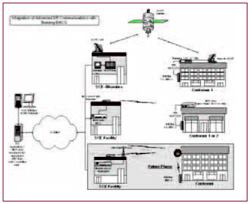The “Big Picture”
Utilities in California are addressing a number of concerns, including; reliability, cost, environmental quality, restructuring, and generation diversity to name a few. Resource Plans are filed with regulators, which identify energy efficiency, demand response, renewables, traditional generation (natural gas, coal, nuclear, etc.), peaker plants, and purchased power. This portfolio of demand and supply side activities is a requirement to keep buildings reliably and cost-effectively energized. Energy efficiency activities target equipment resulting in permanent load reductions while demand response addresses dispatchable loads. Load management involves the integration of technology and controls, which permanently shift loads.
In order for energy efficiency activities to be included in a resource plan, these programs need to be cost-effective, verifiable, and reliable. Rebates are often implemented to encourage decision makers to make energy related decisions. These incentives can go directly to owners or may also go upstream to distributors or manufacturers. Third-party organizations may also deliver these programs. Modifications to Building and Appliance Codes also yield savings opportunities.
